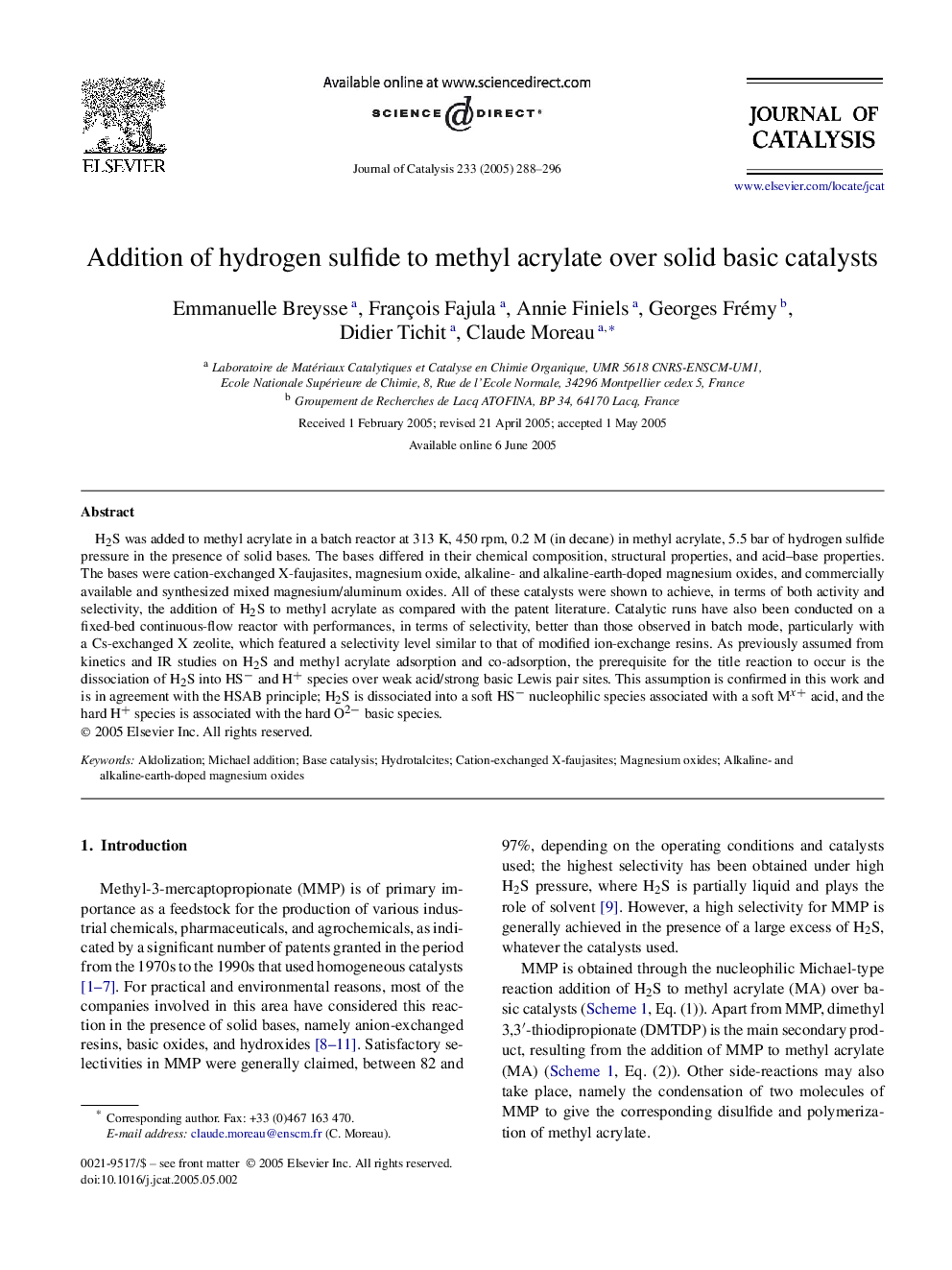| Article ID | Journal | Published Year | Pages | File Type |
|---|---|---|---|---|
| 10244474 | Journal of Catalysis | 2005 | 9 Pages |
Abstract
H2S was added to methyl acrylate in a batch reactor at 313 K, 450 rpm, 0.2 M (in decane) in methyl acrylate, 5.5 bar of hydrogen sulfide pressure in the presence of solid bases. The bases differed in their chemical composition, structural properties, and acid-base properties. The bases were cation-exchanged X-faujasites, magnesium oxide, alkaline- and alkaline-earth-doped magnesium oxides, and commercially available and synthesized mixed magnesium/aluminum oxides. All of these catalysts were shown to achieve, in terms of both activity and selectivity, the addition of H2S to methyl acrylate as compared with the patent literature. Catalytic runs have also been conducted on a fixed-bed continuous-flow reactor with performances, in terms of selectivity, better than those observed in batch mode, particularly with a Cs-exchanged X zeolite, which featured a selectivity level similar to that of modified ion-exchange resins. As previously assumed from kinetics and IR studies on H2S and methyl acrylate adsorption and co-adsorption, the prerequisite for the title reaction to occur is the dissociation of H2S into HSâ and H+ species over weak acid/strong basic Lewis pair sites. This assumption is confirmed in this work and is in agreement with the HSAB principle; H2S is dissociated into a soft HSâ nucleophilic species associated with a soft Mx+ acid, and the hard H+ species is associated with the hard O2â basic species.
Related Topics
Physical Sciences and Engineering
Chemical Engineering
Catalysis
Authors
Emmanuelle Breysse, François Fajula, Annie Finiels, Georges Frémy, Didier Tichit, Claude Moreau,
